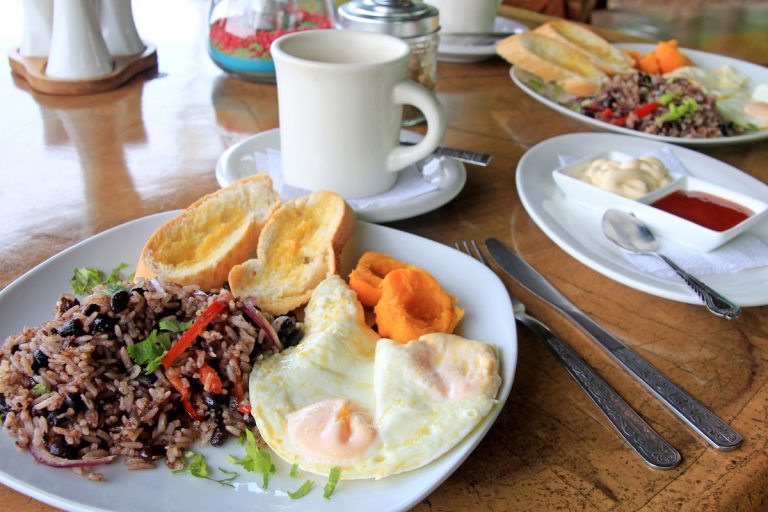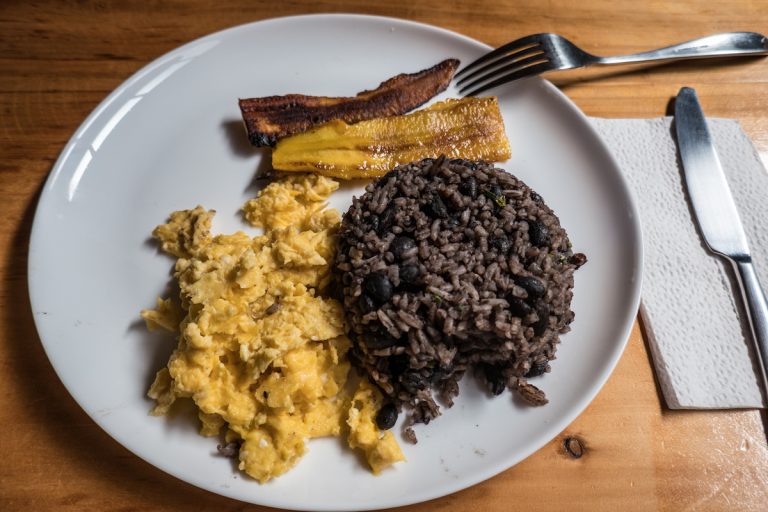Costa Rica is located in Central America, connecting North and South America. It borders Nicaragua to the north and Panama to the south. Because of its location, warm weather predominates, but many different microclimates are found throughout the country.
Although the country is small and it covers only 0.03 percent of the surface of the globe, it proudly shelters 5 percent of the existing biodiversity in the entire world. Twenty six percent of the country is composed of conservation and natural protected territory.
Costa Rica has national patriotic symbols that represent part of the identity and traditions of Costa Ricans, particularly the National Anthem of Costa Rica, the Shield of the Republic of Costa Rica, the National Flag, the White-Tailed Deer, the Guaria Morada (a type of orchid that is the national flower), Marimba, Oxcarts, the Yigüirro (or clay-colored thrush, the national bird), the Guanacaste Tree, The Pre-Columbian Spheres of Diquís, the manatee, the Torch of Independence and the Crestones of Chirripó National Park. The territorial division of Costa Rica includes 7 provinces namely San José, Alajuela, Cartago, Heredia, Guanacaste, Puntarenas and Limón; that together offer an attractive tourist destination with almost unlimited possibilities, and that include extensive rainforests, volcanoes, rivers that walk through the mountains, beaches and many natural resources protected by an important organization of national parks and forest reserves.
Guanacaste
The incomparable beauty of its landscapes, which ranges from tropical dry forests to lowland mountain forests, its warm climate, as well as its flourishing nature have made Guanacaste one of the most heavily visited areas by locals as well as international tourists and is one of the most developed areas because of its high level of investment in the hotel industry that is in high demand. All along the Guanacaste coastline are a number of beaches where you can swim in their warm Pacific Ocean waters. The coastal landscape is exceptional. There is an array of white-sand beaches and calm, intense-blue waters.
Caribe
The main attractions involve the green tortoises nesting grounds along the beaches of the Tortugero National Park and the Barra del Colorado National Wildlife Refuge. This area is known for sport fishing of sea bass, shad, and other species.
The area exhibits a unique mix of beach, natural resources and Afro-Caribbean culture in the surrounding areas like Cahuita, Puerto Viejo, and Gandoca-Manzanillo, which are located in the southern sector of the tourism area. Here there are high-quality beaches where you can find a mix of activities involving adventure and natural history, which uniquely complement the local culture, gastronomy, and music. The area is also known for its coral reefs, multi-colored sand beaches (black, yellow, and grey), costal vegetation, and medium-high forests.
Puntarenas
Puntarenas is one of the most important tourism regions in Costa Rica. Its coastline is full of islands, inlets, beaches, and very beautiful natural treasures, all which make it an excellent tourist destination.
The peninsula area has very important areas geared toward tourism like, Tambor, Santa Teresa, and Montezuma, all with very beautiful natural areas, specifically its beach areas. You can also find the Cabo Blanco Absolute Nature Reserve, San Lucas, Chira, Tortuga, and Coco Islands.
The Monteverde area, located north of Puntarenas, has both national and international significance because of its conservation efforts and life style centered around nature. Santa Elena is the hub for commercial services and tourism-based businesses. Other important communities are San Luis and Gerardo.
The primary attraction is the Monteverde Biological Reserve, however there are many other nature sites, picturesque trails, hanging bridges, as well as butterfly and frog exhibits.
The peninsula area has very important areas geared toward tourism like, Tambor, Santa Teresa, and Montezuma, all with very beautiful natural areas, specifically its beach areas. You can also find the Cabo Blanco Absolute Nature Reserve, San Lucas, Chira, Tortuga, and Coco Islands.
The Monteverde area, located north of Puntarenas, has both national and international significance because of its conservation efforts and life style centered around nature. Santa Elena is the hub for commercial services and tourism-based businesses. Other important communities are San Luis and Gerardo.
The primary attraction is the Monteverde Biological Reserve, however there are many other nature sites, picturesque trails, hanging bridges, as well as butterfly and frog exhibits.
Llanuras del norte
With its several protected areas, lakes, lagoons, volcanoes, rivers and waterfalls, the Northern Zone is undergoing a boom in tourism service and adventure site development, so that nature-loving visitors can enjoy the region’s many riches. Thanks to frequent rains, the Northern Zone features wet and evergreen forests as well as fertile plains natural environments that serve as sanctuaries for water birds, reptiles, mammals and the prehistoric Gaspar fish, and important sites of interest for wildlife-lovers. Adventure activities and nature-watching may be enjoyed on the region’s rivers -Peñas Blancas, San Carlos, Toro, Puerto Viejo and Sarapiquí- some of which are important navigational routes.
Pacífico Central
It has three cities attractive to tourists and well developed for tourism: Quepos, Jacó and Puntarenas. A wet and rainy climate allows for greater biodiversity in the beaches and hills next to the coast; thus, there is a transition from tropical wet forest to tropical forest to tropical dry forest. These ecosystems provide habitat for numerous plant and animal. The region’s main attractions are its coast and protected wilderness areas.
Pacífico Sur
The main activities include beach enjoyment and marine resources, such as whales and dolphin’s observation, as well as mangrove swamp’s, landscapes, reptilian, sport fishing, surfing, hiking through the National Park’s paths, professional diving, the energetic walks to the Chirripo’s summit, botanical gardens, protected areas’ impressive waterfalls… they are all part of the main product offered by the touristic unit.
Gastronomy

















